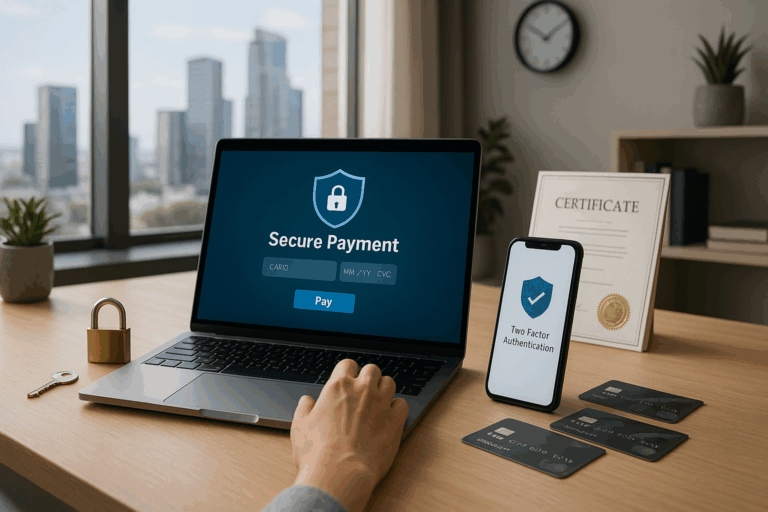The surefire way to win the trust of your audience, assert your authority, and make a lasting impact is by producing authentic, original content. But with the increasing accessibility of information online, plagiarism, unfortunately, has become a pervasive issue, casting a shadow over the sanctity of original work. 💻
But fret not! In this article, we will dive deep into the world of plagiarism: what it is, how it can affect you and your work, and most importantly, how to avoid it. This extensive piece will serve as a beacon for content creators, academics, and professionals alike who aspire to maintain the originality of their work and prevent plagiarism claims. 📝🔒
It’s a tech jungle out there, but we’re here to guide you, not only to help you understand the complexities but to provide practical steps to safeguard your work. As we progress through this article, we will unravel the real-life consequences of plagiarism, the importance of citing sources, and the role of plagiarism detection tools. This comprehensive guide is your ticket to a plagiarism-free professional life. 🚀
Understanding Plagiarism in the Digital Age
Before we proceed, it’s crucial to clear the air on what constitutes plagiarism in today’s digital age. In a nutshell, plagiarism involves using someone else’s work or ideas without giving due credit, thereby implying it’s your own. And in an era where ‘copy & paste’ is as easy as a keystroke, understanding the nuances of plagiarism becomes increasingly significant.
The Impact of Plagiarism
Plagiarism isn’t merely unethical; it can lead to severe legal, professional, and academic repercussions. Its impact is far-reaching, from damaging one’s reputation to potential lawsuits. Yes, the cost of plagiarism can be high! We will examine these implications in detail, shedding light on why it’s essential to steer clear of plagiarism.
Proactive Steps to Avoid Plagiarism
Good news is, plagiarism can be avoided! We will reveal practical strategies to ensure your work remains original and free from plagiarism allegations. From meticulous referencing to the correct use of quotations and paraphrasing, we will leave no stone unturned. Plus, we will walk you through some of the best plagiarism detection tools that can help you in your quest for originality. 🛡️
Every word, every sentence, every paragraph you write is a testament to your knowledge, skill, and creativity. In a world where plagiarism is a looming threat, safeguarding your work and preserving its authenticity is not just a choice, but a necessity. We invite you to join us as we explore the depths of plagiarism and its prevention, arming you with the knowledge and tools to “Stay Original.” 🔎
Let’s dive right in, shall we? 🏊♂️
Understanding Plagiarism in the Digital Age
Plagiarism is not a novel issue, but it has become increasingly prevalent in the digital era. The internet’s limitless availability of information makes it tempting to borrow someone else’s work without proper attribution. However, it’s crucial to understand the importance of originality and how to safeguard your work. This article will provide a comprehensive guide to avoiding plagiarism claims and maintaining the integrity of your work.
Before we delve deeper, let’s understand what plagiarism is. According to the Merriam-Webster dictionary, plagiarism is “to steal and pass off (the ideas or words of another) as one’s own: use (another’s production) without crediting the source.” It’s considered unethical and, in many cases, illegal. It can lead to severe consequences, including loss of reputation, legal repercussions, and academic penalties. Therefore, it’s essential to understand how to safeguard your work and maintain its originality.
It’s worth noting that plagiarism isn’t limited to text-based content; it extends to images, designs, software code, and even ideas. So, whether you’re a student, writer, designer, or developer, it’s crucial to stay original and respect the intellectual property rights of others. The following sections will provide detailed strategies to help you avoid plagiarism.
Developing Good Research Habits
Good research habits are fundamental in avoiding plagiarism. With the plethora of information available online, it can be difficult to discern which sources are reliable and how to appropriately use and cite them. It’s important to remember that while research forms the basis of your work, it’s not meant to be copied verbatim.
Begin by thoroughly reading and understanding your sources. This will help you to rephrase the information in your own words, ensuring that the work remains original. It’s also crucial to keep track of your sources, making it easier to provide accurate citations and references.
Another good habit is to avoid procrastination. When you’re pressed for time, it’s tempting to take shortcuts, which can lead to accidental plagiarism. Therefore, manage your time wisely to allow for adequate research and writing time. This will help maintain the integrity of your work and reduce the risk of plagiarism.
Understanding Paraphrasing and Quoting
Paraphrasing and quoting are common techniques used in writing, but they can also lead to plagiarism if not done correctly. When you paraphrase, you’re rewriting someone else’s ideas in your own words. This requires a thorough understanding of the source material, and it’s essential to ensure the meaning isn’t altered. On the other hand, quoting is directly citing a portion of text from the source, which should be used sparingly and always credited to the original author.
Consider watching this enlightening YouTube video, titled “Paraphrasing: How to Avoid Plagiarism in Research Papers,” by Wordvice Editing Service, to further hone your paraphrasing skills.
💡 Tip: Make sure to always cite your sources, whether you’re paraphrasing or quoting. This is not only ethical but also adds credibility to your work.
Tools to Detect and Prevent Plagiarism
Thankfully, several tools can help detect and prevent plagiarism. These include plagiarism checkers, citation generators, and writing enhancement tools.
Plagiarism checkers, such as Grammarly and Turnitin, compare your work against millions of documents on the web to identify any instances of similarity. They’re a useful way to ensure your work is original before it’s published or submitted.
Citation generators, like Citation Machine and EasyBib, can also be invaluable in avoiding plagiarism. They help create accurate citations in various styles, such as APA, MLA, and Chicago, reducing the chances of citation errors.
Writing enhancement tools, such as Hemingway Editor and ProWritingAid, can help improve your writing skills, making it easier to express ideas in your own words. These tools provide real-time feedback on your writing, including suggestions for improving clarity, readability, and originality.
Comparison of Plagiarism Detection Tools
| Tool | Features | Price |
|---|---|---|
| Grammarly | Grammar and punctuation checks, plagiarism detection, writing style suggestions | Free version available, premium plans starting at $11.66/month |
| Turnitin | Plagiarism detection, grading tools, feedback studio | Quote-based pricing |
| Hemingway Editor | Readability assessment, writing style suggestions, adverb and passive voice detection | Free version available, desktop version for $19.99 |
| ProWritingAid | Grammar and style checking, detailed reports, writing improvement suggestions | Free version available, premium plans starting at $20/month |
Legal Implications and Intellectual Property Rights
Understanding the legal implications of plagiarism is crucial. Plagiarism can lead to severe consequences, including lawsuits for copyright infringement. Copyright laws vary by country, but they generally protect original works of authorship, including literary, dramatic, musical, and artistic works.
In the US, for instance, copyright infringement can result in statutory damages ranging from $750 to $30,000 per work, or up to $150,000 if the infringement is found to be willful. Therefore, it’s crucial to respect the intellectual property rights of others and ensure your work is original.
In addition to legal repercussions, plagiarism can also lead to academic penalties, loss of professional reputation, and job termination. Therefore, it’s crucial to maintain academic integrity and professional ethics by ensuring your work is original and properly cited.
Protecting Your Work
While it’s essential to avoid plagiarizing others’ work, it’s equally important to protect your own. Registering your work with the copyright office provides legal evidence of your ownership, making it easier to enforce your rights in case of infringement. You can also use digital watermarking, metadata, or Creative Commons licenses to assert your rights and specify how others may use your work.
For more detailed information on copyright laws and how to protect your intellectual property, consider watching the YouTube video, “How to Copyright a Song for Free (Songwriting 101),” by Smart Rapper.
Remember, staying original isn’t just about avoiding plagiarism; it’s about respecting intellectual property, maintaining your credibility, and contributing to the world of knowledge in a meaningful way. So, always strive for originality in your work and ensure it is properly cited and referenced.
🚀 Takeaway: Safeguarding your work and avoiding plagiarism is a vital aspect of digital content creation. It involves developing good research habits, understanding the rules of paraphrasing and quoting, using plagiarism detection tools, understanding the legal implications, and taking measures to protect your own work. By adhering to these practices, you can maintain the integrity and credibility of your work while avoiding potential legal and ethical issues.

Conclusion
In this comprehensive review, we’ve walked through several key points and concepts concerning the intriguing world of Information Technology (IT) and engineering. We’ve dissected complex concepts and made them accessible, shedding light on the intricate mechanisms that govern these domains.
Firstly, we explored the relevance of software engineering, appreciating its influence in shaping our digital world. As we’ve seen, software engineering isn’t just about coding, it encompasses a broad array of tasks, from requirements analysis and system design to testing and maintenance. We’ve also examined some of the trending frameworks and best practices in this field, stressing the need for continuous learning and adaptation in such a rapidly-evolving industry.
Next, we journeyed into the realm of IT, exploring its indispensable role in virtually every aspect of modern life. We’ve seen how IT influences business operations, communication, and even social dynamics. We also delved into key areas of IT such as cloud computing, data management, and cybersecurity, reinforcing the importance of these fields in our increasingly data-driven world.
Throughout our discussion, we’ve sought to translate these intricate concepts into digestible nuggets of information, leveraging my background in software engineering and technical writing. My hope is that you’ve not only learned something new but also gained a deeper appreciation of the IT and engineering domains and their impacts on our lives.
As we conclude this article, I’d like to emphasize once more the importance of these fields in shaping our future. As the famous saying goes, “software is eating the world.” Yet, beyond the software lies the IT infrastructure that supports it, the cybersecurity that protects it, and the data management practices that ensure its effective use.
This discussion is far from exhaustive, and there’s so much more to explore. So, I encourage you to continue your learning journey. Research more about these topics, participate in online forums, or even enroll in relevant courses. Sharing your thoughts and experiences can also help others learn, so feel free to leave a comment below or share this article with your network.
Let’s keep the conversation going. Remember, the more we learn, the better we can navigate this digital age and harness the power of technology for our benefit.
<a href=”https://www.edx.org/course/subject/computer-science”> Check out these courses on computer science </a> or <a href=”https://www.coursera.org/courses?query=software%20engineering”> these on software engineering </a>. Also, the <a href=”https://www.w3schools.com/”>W3Schools</a> is a fantastic resource for anyone looking to expand their IT knowledge.
Thank you for taking the time to read this article. I hope it has been informative and inspiring. Keep learning, keep growing, and let’s embrace the digital future together. 🚀💻🌐



